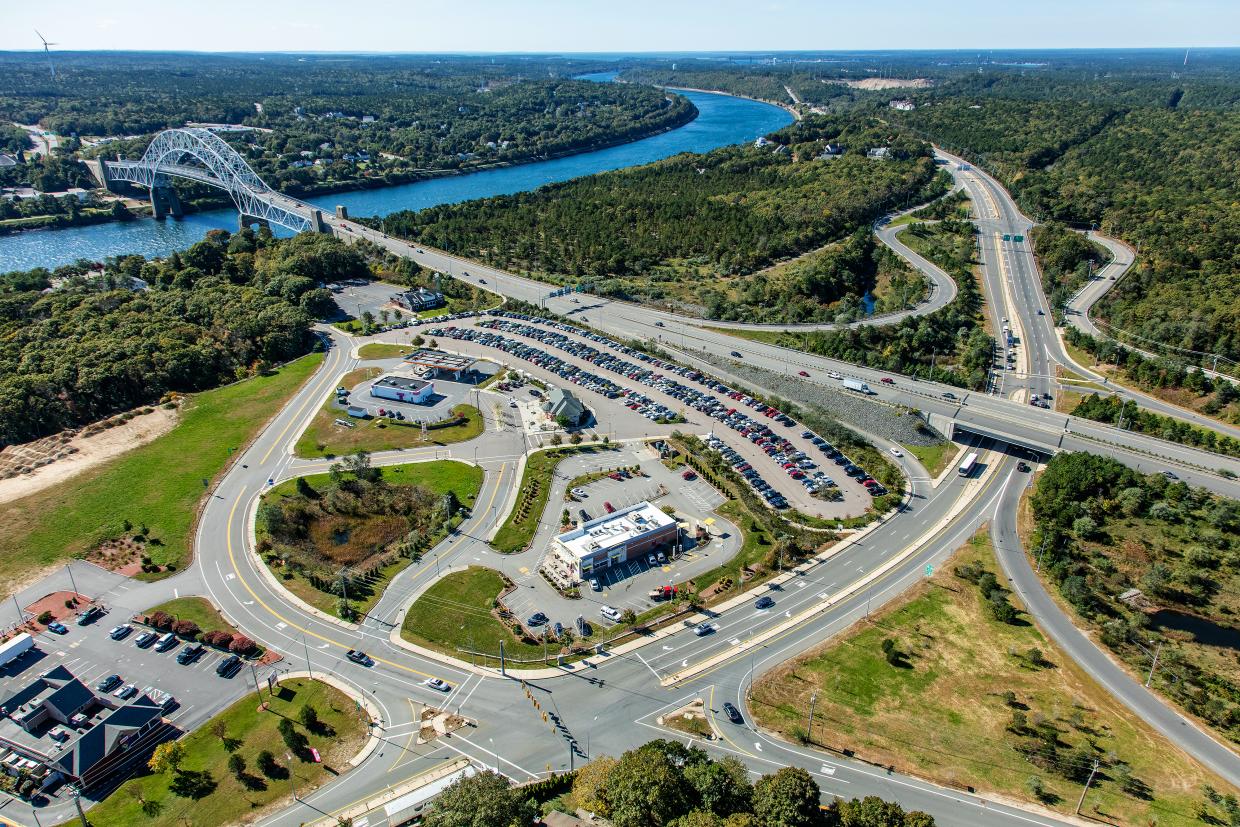I understand the stated value of the additional lanes, but it seems like the feds have taken issue with the project (twice now?). Some combination of high cost and auto-centric planning seem like culprits (unless it's simply the feds not wanting to drop so much money on one project in this round of funding). I wonder if a little more creativity could garner more support (MA congressional delegation looking for transit win?).
I guess the state could never organize the FTA to pay for X transit project (CC RR bridge or SCR P2) to save the FHA Y money on the canal crossing.
Bridge costs don't tend to scale linearly AFAIK. The difference in cost between building a 4 lane bridge vs a 6 lane bridge is not going to be 33%, but a much smaller fraction.
And in this case, that'd be even more true, because the proposed auxiliary travel lanes are a small portion of the drastically increased bridge width.
The current bridges are 48', with no shoulders, no median, 10ft lanes, a 5' sidewalk and a 2' sidewalk.
The proposed bridges look to be 138', an increase of 90' in width. But only ~24' of that is due to making it a 6 lane bridge. The rest is from the other 4 lanes being wider, proper shoulders, median, a protected 2-way bike lane, and full sidewalks.
If we're doing something that's going to be in place for many decades to come, doing it right makes sense. The current bridges (and their deficient interchanges/ramps) are a bottleneck on both ends, essentially limiting the utilization of the rest of the connecting infrastructure.
I suspect dropping the bridge to 4 lanes would look
worse from a funding perspective - the reduction in the utility/claimed benefits of the project is greater than the reduction in costs.
-------------
Beyond this, while I think more rail service (and year-round) should absolutely be a priority - in part for the economic viability of the area and non-tourist residents, I also think it's unrealistic that it's ever going to serve more than a small fraction of Cape-bound tourists - mostly people either heading to the ferry to the islands and people meeting friends/family already out there with a car.
The rails can only get you to a very small portion of the Cape and the Cape has a more or less set in stone development pattern of largely single-family homes that are basically suburban subdivisions at the beach. Much of that is...never going to be very well served by any kind of transit - especially for kinds of trips tourists are making with their cars while *on* the Cape - grocery stores, restaurants, various tourist/recreational activities. The trips they need the car for while on vacation (not getting to the Cape, but while on the Cape) are too dispersed in time and geography.
Also - You don't usually go on vacation alone, or do things on vacation alone. I don't know if there's data on vehicle occupancy of tourists, but it's almost certainly far higher than it is in normal daily/commuter road use. Cars clearly still aren't great, but a fully occupied car is a much less terrible proposition than a single-occupancy one.


